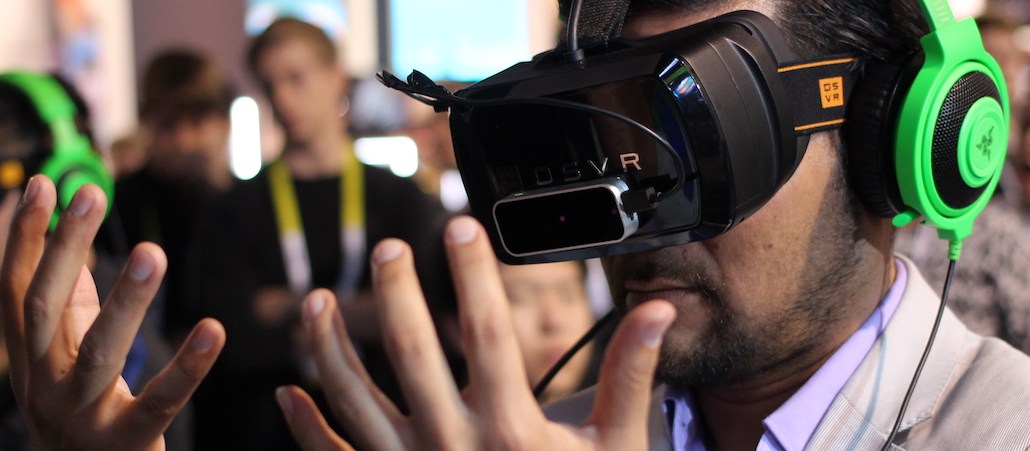
For a little over a year, the Associated Press has produced 20 virtual reality and 360 videos across a broad range of topics. From breaking news like the terrorist attacks in Nice, France, in July this year, to the Rio Olympics, to lifestyle-feature stories on luxurious hotels and apartments, and science and technology stories on Alzheimer’s disease, the AP has aimed to put its audience directly inside the story. All the videos live on an “AP 360 Videos and Virtual reality” web page, as well as Facebook and YouTube.
More than a year in, the AP, a news co-op with more than 1,400 members, is moving on from its “initial experimentation stage,” said Paul Cheung, director of interactive and digital news, who heads AP’s VR and 360 video efforts.
“Right now we’re on a pilot program,” said Cheung. “The goal is to understand how it works, optimize internal work flow and explore monetization opportunities.” He described it as a “bootstrapped” operation: There isn’t a dedicated VR group, instead his team of five works within the interactive department, which is responsible for all multimedia storytelling. Journalists in other AP offices around the world are also dabbling in the medium, from Latin America to Asia to the Middle East, he said.
One of the barriers to creating VR and 360 video is the often expensive technology required, both on the production end and the gear required by users to experience VR. But Francesco Marconi, AP’s manager of strategy and corporate development, said that doesn’t have to be the case.
To get around those costs, AP has used low-cost equipment such as Ricoh cameras (under $400) and Samsung camera gear. It’s also struck partnerships with startups in the space who can lend technology. AP partnered with Ryot for example, the virtual reality startup that was recently bought by the Huffington Post, to create a five-and-a-half minute virtual reality documentary, “Seeking Home: Life Inside the Calais Migrant Camp.” The idea is to eventually make sure every reporter is able to create 360 videos through internal training, and then roll out workshops and seminars to its clients and members.
AP said one of the big lessons is understanding when VR and 360 video won’t work. For example, a reporter went to New York’s recent fashion week to try to shoot a piece of VR, when they realized it wouldn’t work for the medium because the viewer, positioned as a member in the audience, is focused on one point: straight ahead. When the viewer would turn around, they’d see other cameras towering over them.
“Most events are not designed for VR,” said Marconi. A similar situation occurred at the Oscar’s for which AP did a 360 video. “If you look at the front you see red carpet but if you look back you see cameras and journalists towering over you. You have to ask how do you create an experience to immerse the user,” he said.
“The rule of thumb is ‘would you look around you in a certain situation?’ if the answer is yes, then maybe there is an opportunity to create a VR experience,” echoed Cheung.
When AP first started creating VR and 360 videos, they were up to six minutes in length in some cases. “If you look at earlier video we took a more documentary look,” said Cheung. It then shifted its focus to shorter form video for its Rio Olympic coverage and short 360 video series on North Korea, because it found shorter videos worked better on social media platforms.
“We also find short storytelling is better for breaking news,” said Cheung. One of its most popular 360 videos was created by a video journalist shortly after the recent New York City bombings, which got more than 34,000 views. It does stick to longer time frames for feature stories like, “Ground Zero Reborn: Lower Manhattan, 15 years after 9/11,” however.
Looking ahead, Cheung said there remain several hurdles in VR, including hiring people who have the technical expertise for example, creating a true “VR experience” where viewers can interact with objects and move through spaces. “We quickly realized while [VR] is interesting, 360 video is a better route because it doesn’t require users to have expensive gear.”
Curtis Rose, senior vp and director of creative technology at ad agency Erwin Penland, said AP has gone head first, and “arms wide open” when it comes to VR and 360 video and have realized that it has got to give its reporter access to the storytelling technique. “Barriers are coming down through social media channels and it’s becoming that much more accessible to immerse consumers into it,” he said, but he added publishers need to be careful not to overwhelm consumers with VR and 360 video.
“The key will be to compliment coverage and not inundate consumers with too much information. It’ll be a fine balance and we as an industry need to be careful and focused when it’s right to use technology.”
More in Media

Digiday Scorecard: Publishers rate Big Tech’s AI licensing deals
Digiday has compiled a scorecard grading AI platforms to make sense of the growing number of players in the AI content licensing market.

Publishers are hunting for AI prompt data — now they’re starting to get it from third-party companies
Publishers are finally gaining some visibility into AI search, as new prompt data tools crack open a black box.

Digiday+ Research: Publishers’ growing focus on video doesn’t translate to social platforms
Major publishers have made recent investments in vertical video, but that shift is not carrying over to social media platforms.





